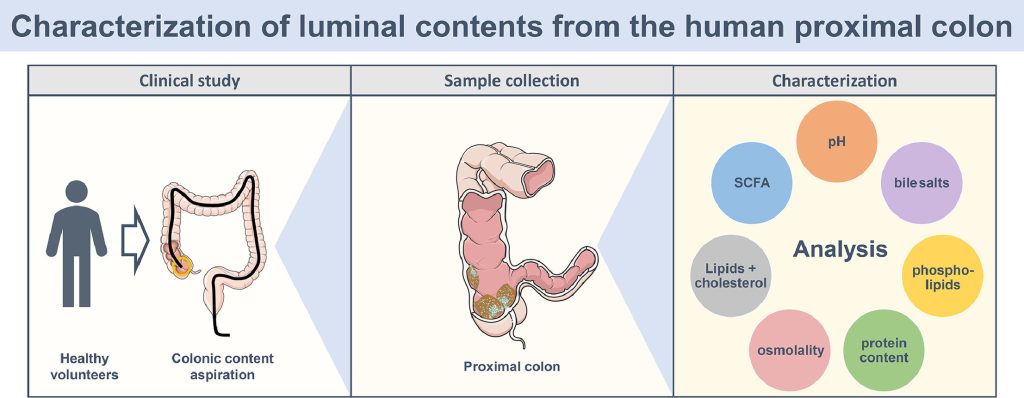Characterization of luminal contents from the fasted human proximal colon
S. Steigert, J. Brouwers, K. Verbeke, T. Vanuytsel, P. Augustijns
In the EUROPEAN JOURNAL OF PHARMACEUTICAL SCIENCES
Abstract
To treat colonic diseases more effectively, improved therapies are urgently needed. In this respect, delivering drugs locally to the colon is a key strategy to achieve higher local drug concentrations while minimizing systemic side effects. Understanding the luminal environment is crucial to efficiently develop such targeted therapies and to predict drug disposition in the colon. In this clinical study, we collected colonic contents from an undisturbed fasted proximal colon via colonoscopy and characterized their composition with regard to drug disposition. Colonic pH, osmolality, protein content, bile salts, lipids, phospholipids and short-chain fatty acids were investigated in 10 healthy volunteers (8 male and 2 female, age 19–25). The unique environment of the proximal colon was reflected in the composition of the sampled luminal fluids and the effect of the microbiota could be observed on the pH (median 6.55), the composition of bile salts (majority deconjugated and secondary), and the abundance of short-chain fatty acids. At the same time, an increase in phospholipid concentration, osmolality and total protein content compared to reported ileal values was seen, likely resulting from desiccation. Lipids could only be found in low quantities and mainly in the form of cholesterol and free fatty acids, showing almost complete digestion and absorption by the time luminal contents reach the colon. All characteristics also displayed the considerable intersubject variability found in different regions of the gastrointestinal tract. This study contributes to an improved understanding of the luminal conditions in the proximal colon and facilitates the development of new predictive tools to study colonic drug absorption.
Read the full article here: https://doi.org/10.1016/j.ejps.2024.106821



